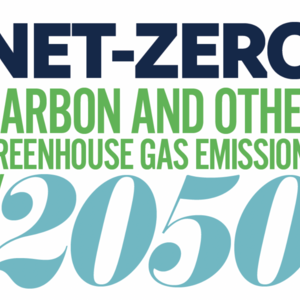
There appears to be real momentum in the wake of COP28, the most recent Conference of the Parties to the UN Framework Convention on Climate Change, held this year in Dubai. The 28th such conference, which concluded on December 12, is being heralded even by some skeptics as a “turning point” in the global fight against anthropogenic climate change.
Case in point, despite Saudi Arabia’s vocal opposition mid-conference to any UN agreement that called for a phaseout of fossil fuels (or even any deal that mentioned fossil fuels), COP28 concluded with what’s been dubbed the “UAE Consensus,” a historic deal that commits nearly 200 countries to transition away from fossil fuels, and includes a tangential agreement to triple global renewable energy capacity by 2030. For context, this is the first time any COP agreement has included language that specifies a winding down of fossil fuels. (Granted, a “phaseout” did not make it into the consensus.)
A global agenda to reduce building emissions
Another COP first that came out of Dubai is the Buildings Breakthrough. This agreement, officially launched at COP28 and signed by 28 countries (a fitting albeit too-small number), marks the first time the building sector has received due attention within the broader concern of decarbonizing high-emitting sectors. The Breakthrough’s target is to make “near-zero emission and resilient buildings … the new normal by 2030.”
Now, any healthy skeptic will read those words and infer a world of gray area and opportunity for bad-faith actors to greenwash with abandon. What’s the limit of “near” zero, anyway? For that matter, what is “normal”? Let’s start by considering the countries that signed on. The full list includes Armenia, Austria, Canada, China, Côte d’Ivoire, Egypt, Ethiopia, Finland, France, Germany, Ghana, Guinea-Bissau, Japan, Jordan, Kenya, Liberia, Mauritania, Mongolia, Morocco, Netherlands, Norway, Senegal, Sweden, Tunisia, Türkiye, United Kingdom, United States of America, and Zambia.
Notably absent from the list are countries like India, Russia, Indonesia, South Africa, and Australia, all major consumers and/or exporters of coal. Also absent are petrostates like Saudi Arabia, UAE, Iran, Mexico, Algeria, and at least a dozen more. Such omissions could clearly suggest that the inverse relationship between fossil fuel production and decarbonization of the built environment isn’t lost on those nations that didn’t sign on. For that display of common sense, I suppose of modicum of credit is due. But if we’re looking at the proverbial glass as half full, it’s worth highlighting that the world’s three largest emitters of greenhouse gas–China, the U.S., and the EU–are signatories of Buildings Breakthrough.
“It’s really getting buildings on the radar as a priority [in] addressing both climate adaptation and mitigation challenges,” says Ryan Colker, vice president of innovation at the International Code Council (ICC). “To have 28 countries sign on and recognize that buildings are a key piece of the climate puzzle, I think it’s really exciting.”
Standards and definitions
The ICC, which is a member of the Global Alliance for Buildings and Construction (GlobalABC), overseen by the UN Environment Programme (UNEP), will provide counsel to governments and the building sector as the Breakthrough agenda is carried out. “We’re all going to be working together to achieve the best possible outcome, but it’s not a foregone conclusion,” says Judy Zakreski, ICC’s vice president of global services. “There’s not a clear, defined path” to reducing building emissions at this scale. Key to Buildings Breakthrough’s eventual success or lack thereof, confides Zakreski, may come down to participant nations’ ability to “agree on standard definitions.” She cites “whole-life carbon” and “resiliency” as two examples. “There are numerous definitions out there. People are now saying ‘nearly net-zero’ and ‘net-zero ready.’ And then the definition of net zero is not even fully accepted globally.”
Some of those particulars will ideally be hashed out at the Buildings and Global Climate Forum in Paris next March (co-hosted by the Government of France and UNEP), which will bring together construction ministers from signatory nations and other key stakeholders. One wrinkle, at least as far as the U.S. is concerned, is the country’s lack of a dedicated minister (or czar) of buildings and construction. This leaves open the question of who exactly will represent the world’s second largest emitter of GHG at these talks.
“I think HUD is at the table. DOE is at the table. There’s certainly some role for the State Department, given its international work,” Colker speculates. “I think those agencies will definitely be involved; to what extent is hard to say at this point.”
History of a breakthrough
Dubai may have provided the launching pad, but this development has been years in the making. Two years ago, at COP26 in Glasgow, Scotland, 45 nations came together to create a “Breakthrough Agenda” with the aim of “strengthening international collaboration” to advance clean technologies and decarbonize high-emitting sectors. The Breakthrough Agenda Report was published in September 2022. It identified agriculture, transportation, power, hydrogen, and steel as the high emitters in question, clearly omitting buildings from the equation and making no mention of fossil fuels.
While that report was being finalized, however, France and the Kingdom of Morocco were devising their own addendum. At the Bonn Climate Change Conference, in June 2022, France’s Ministry for Ecological Transition and Territorial Cohesion, and Morocco’s Ministry of National Territory Planning, Land Planning, Housing and City Policy, announced their intent to co-lead a new Buildings Breakthrough target. Fast forward to November of that year, at COP27 held in Sharm El Sheikh, Egypt, where both governments re-confirmed their commitment to such a Breakthrough as a “rallying point”; 16 governments pledged their support out of the gate. (The U.S. wasn’t among them.)
What took so long?
In a bad year, the global steel industry is responsible for roughly 7% of CO2 emissions from fossil fuel combustion. Agriculture accounts for about 11% and the transportation sector roughly 20%. All the same, in the post-Paris Agreement era, why has it taken so long for the real estate sector and its associated 40% of global CO2 emissions to enter the discussion?
According to Zakreski, it’s a question of compartmentalization. “It has taken a long time to unite all of the disparate aspects of the building industry to come together and focus on bringing buildings to the forefront,” she says. “The industry is so fragmented.” Feeding that fragmentation is a lack of uniform regulations to ensure we are building to a higher standard. “The government is saying, we need the [building] industry to tell us it’s okay to regulate. And the industry is saying, we want the government to regulate; we want a high floor.” Accountability and leadership, it would appear, are also in short supply.
Following the Buildings Breakthrough launch at COP28, participating countries identified five action areas that are critical for building decarbonization: standards & certifications, demand creation, finance & investment, research & development, and capacity & skills.
Finding the means and political will to translate all this into tangible action isn’t as rare a commodity as it once was. Reaching consensus on what shape that action should take, and on such a stage, while accounting for the vastly different sector needs and energy mixes of a Sweden versus a Senegal, for example, is indeed a rare feat. “Looking at those five action areas, we were all working towards being able to deliver some concrete opportunities for [each] country to achieve their commitments,” Zakreski says. “Underlying the Breakthrough is a lot of tools that countries will be able to leverage to get them to their net zero commitments that they’re making in the [building] sector.”
When the ministers gather in Paris this March, there will be considerable pressure to conclude the forum not with a quorum but with solidarity. While consortium leadership–and the moral authority, to a large degree–lies with France and Morocco, most eyes will be fixed on select countries. The subtexts of those glares will all pretty much be the same. Can China reasonably commit to achieving “near-zero emissions” in its building sector given that coal power within the country continues to expand? Can the UK commit, given Prime Minister Rishi Sunak’s recent position reversal on carbon reduction targets? Can Norway commit, given that its oil and gas sectors reportedly expect a rise in investments in 2024? And can the U.S. commit, given how fragmented and inconsistent building and energy codes are applied from one state to the next?
There is little doubt that every one of the 28 countries that signed the Buildings Breakthrough did so in good faith. But these are fair questions, nonetheless. Compartmentalizing different markets and sectors like, say, buildings and energy, all in the name of achieving net-zero something in one while further shrinking the stratosphere with the other, is just robbing Peter to pay Paul.
“The building industry certainly needs to step up,” Colker says. “There are opportunities to drive standards, but that requires engagement of the broader industry.”
____________________________________________________________________
Justin R. Wolf is a Maine-based writer who covers green building trends and energy policy.
Weekly Newsletter
Get building science and energy efficiency advice, plus special offers, in your inbox.















0 Comments
Log in or create an account to post a comment.
Sign up Log in